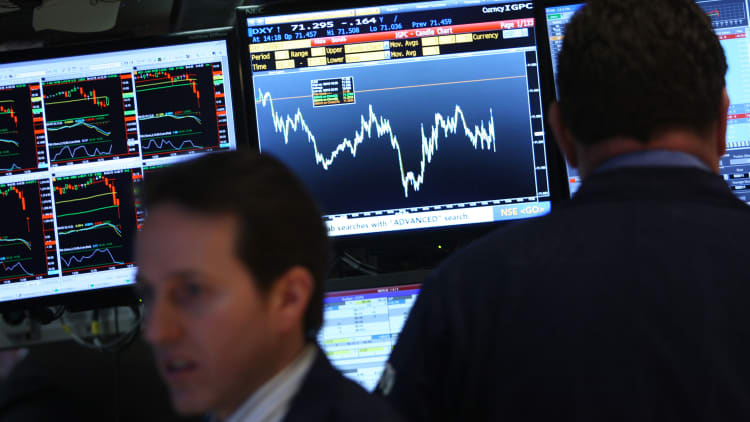
The CBOE Volatility Index is often referred to as the "market fear gauge," since it tends to rise as investors become more and more willing to pay for protection against a decline in equity prices.
But just because the index is plumbing 10-year lows this week, that does not necessarily mean that complacency has overtaken the market.
The VIX measures expected volatility by examining the current prices of options. The more people are willing to pay for these products — which, as a group, increase in value as the S&P is seen as more likely to either rise or fall — the higher the VIX will be.
If investors take the viewpoint that a big market drop is likely in the next 30 days, investors will pay more for options that would profit off of such a decline, and the VIX will rise in reflection of this "fear." More generally, expectations of large market moves to either the upside or downside will send the index higher.
So how do investors evaluate the likelihood of large market moves? The same way that a sports bettor might evaluate the likelihood of the Knicks winning their next game, or that a bartender might evaluate the likelihood of patrons getting into fights on a Friday night: based on what has happened recently.
In the market, meanwhile, what has happened recently is approximately nothing. As LPL Financial technical analyst Ryan Detrick pointed out on Wednesday morning, in the past five days, the S&P 500 has traded in a range of merely 0.66 percent — its smallest five-day range since January 1994.
"The markets have been very quiet for a very long time. So if anything, the low VIX is really just telling us that things are quiet, and people are not willing to pay a lot for short-dated protection," Pravit Chintawongvanich,
Some have complained that the market's level of volatility "ought to" be higher; "the statistically low level of volatility seemingly defies the risk we think should be associated with a U.S. economy approaching its 8-year anniversary and amidst sustained Fed tightening and an impending balance sheet drawdown," wrote Jim Strugger, derivatives strategist at MKM Partners, in a Wednesday note.
It is a common refrain. Even setting the macroeconomic backdrop aside, the natural inclination of those staring at the chart of the VIX is to "look at the previous time something happened and then instantly infer that the same thing is going to happen," as Chintawongvanich put it Tuesday.
For instance, it has become popular to look at other times the VIX has been near this level, and the way the market subsequently responded; such studies tend to find that the VIX eventually rose and that stocks fell.
But using such studies (or really anecdotes, given the small number of samples) to predict a similar move this time around is logically fallacious, insofar as the precise reason we are running them now is that volatility is at levels rarely seen before. To say that volatility tends to rise when it is at record-low levels is tautological — akin to saying that whenever the weather is as rainy as it has ever been before, it tends to get sunnier.
Such historical analysis likely offered cold comfort to the animals left off of Noah's Ark. Likewise, investors should think twice before making investment decisions based on signals supposedly thrown off by an untradeable and poorly understood index that is younger than Taylor Swift.






